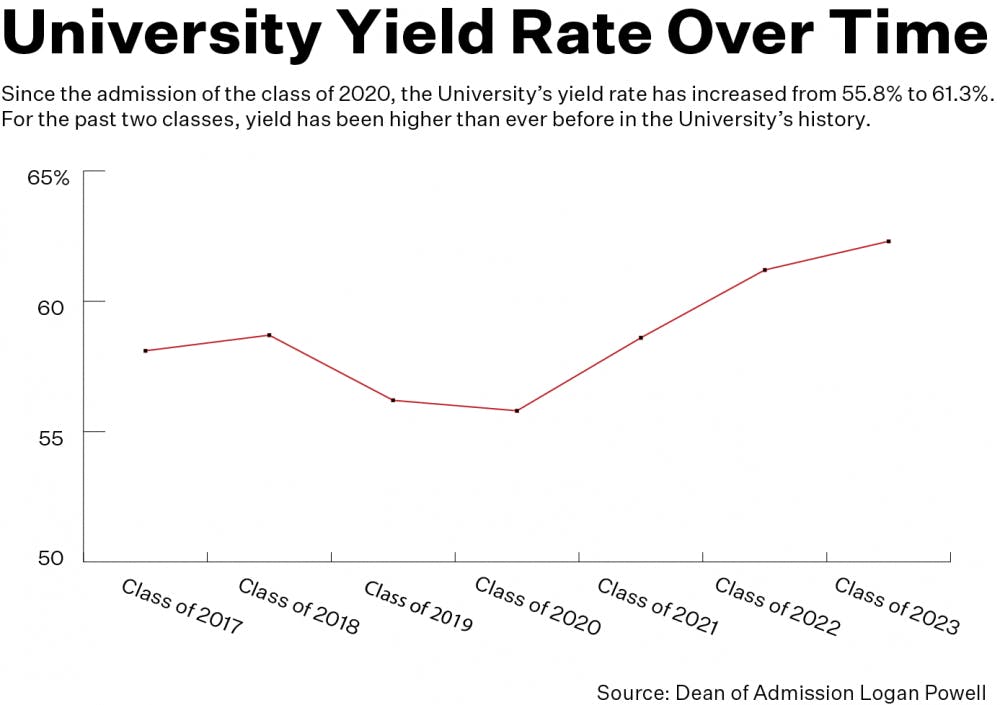The yield rate for the class of 2023 — the percentage of accepted students who enrolled at the University — reached a record-high 62.3 percent, said Dean of Admission Logan Powell.
The University has seen a steady increase in yield numbers over the past three classes, according to data provided by the Admission Office. For the class of 2020, the yield rate was 55.8 percent.
Powell attributed the increase in yield rates to various initiatives within the Admission Office and the Financial Aid Office.
Since 2017, the Admission Office has added additional events to its A Day On College Hill program for admitted students, growing it from one event to three held throughout the month of April. This has increased overall ADOCH attendance by 25 percent, giving accepted students more opportunities to learn about the University firsthand, Powell said. The Admission Office also increased the number of travel grants given to admitted students attending ADOCH, The Herald previously reported.
First-year students interviewed by The Herald cited ADOCH as an influencing factor in their decision to enroll.
After visiting campus for ADOCH, “I couldn’t imagine myself being anywhere else, because I felt like the happiest version of myself would be here,” said Asenette Ruiz ’23.
Gabe Merkel ’23 said that the ADOCH program he attended last spring gave him the impression that “Brown really does want its students to enjoy their experience here and find success academically.” Merkel added that he “didn’t get that sense from other schools that (he) visited for admitted students’ days, both from the students and from the activities that were planned, and the speeches that were given.”
Additionally, Powell said the Brown Promise — which eliminated loans from financial aid packages starting with the class of 2022 — made the University more attractive to students weighing aid packages from other institutions.
Though initiatives such as the Brown Promise increase the University’s yield rate, they are not conceived with this goal in mind, Powell added.
The implementation of the Brown Promise was a “transformative moment” for the University, he said, adding that Brown is currently one of only a few peer institutions “that are need-blind for all domestic applicants, that meet full demonstrated need and that don’t package loans in financial aid awards.”
The Brown Promise was particularly appealing to Ruiz, who applied only to institutions she believed would offer her competitive financial aid packages.
Similarly, for Isaac Jenemann ’23, “knowing that (the admission process) was need-blind” was a draw for him to apply in the first place.
In addition to the Brown Promise, the Financial Aid Office has made efforts to increase aid offered to middle and moderate-income students and decrease parent contributions in these cases, said Dean of Financial Aid Jim Tilton. The University also offers a health insurance scholarship to every student on financial aid who doesn’t have “comparable insurance coverage,” an award of approximately $3,800, he said.
Aside from Admission Office and Financial Aid Office initiatives, the Open Curriculum also helped convince first-years interviewed by The Herald to enroll at the University.
Katherine Dowling ’23, who was unsure what she wanted to study before matriculating, felt that the Open Curriculum would offer her the freedom to take classes across many disciplines. Jenemann was similarly attracted to the size of the University and the liberal arts curriculum.





